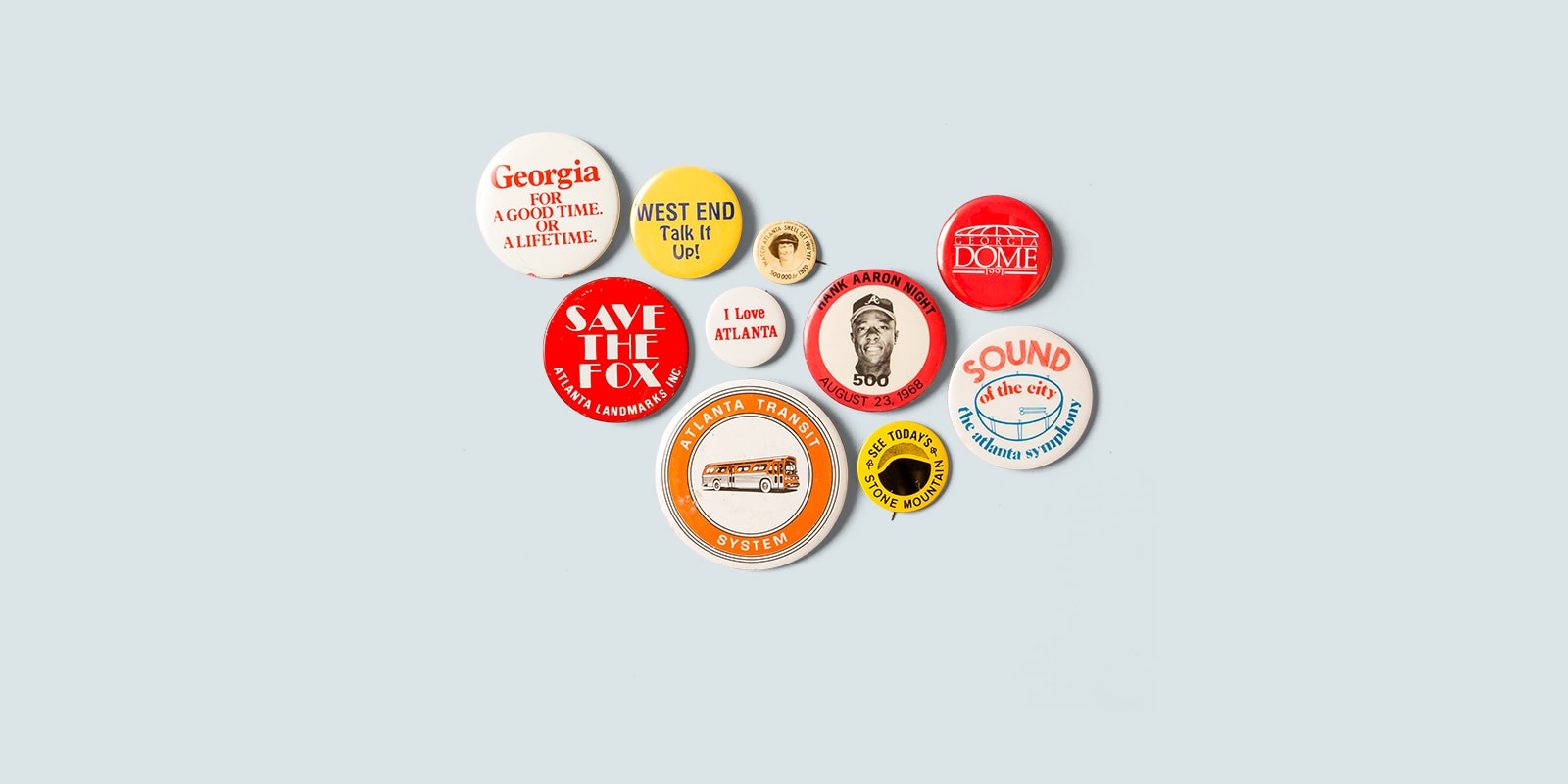Atlanta in 50 Objects
A pink pig and a renegade cow. A movie prop and a Coke bottle. A Pulitzer Prize–winning book and a Nobel Prize–winning icon.
How do you tell the story of Atlanta in 50 objects? We decided the best experts were Atlantans themselves—residents who cheer the Braves and rue I–285 rush-hour traffic, who understand how Civil War losses and Civil Rights victories together helped forge the city’s unique identity. Atlanta History Center asked the public to submit what objects they think best represent their town. The parameters were broad: an object could also be a person, a place, an institution, or an idea. After receiving hundreds of submissions, History Center staff assembled a collection of fifty pieces that represent the themes identified by the public. In addition to items from our own collections, we have partnered with many local institutions and individuals to gather artifacts from around the city to tell this community–driven story.


The Centennial Olympic Games
In 1987, Atlanta attorney William Porter Payne founded the Georgia Amateur Athletic Foundation with a quest to win the bid for the Centennial Olympic Games for Atlanta.
Garnering a largely volunteer force and seeking the guidance of Ambassador Andrew Young, Atlanta won the bid for the United States in 1988. To the astonishment of many, Atlanta was selected in September 1990 by the International Olympic Committee to host the 1996 Games.
For the first time in Olympic history, all invited 197 National Olympic Committees sent delegations, including 10,318 athletes to participate in 271 events in twenty-six sports. A corps of 47,466 volunteers contributed to all aspects of planning and hosting. The Olympic Games were played over sixteen days and the four-year Olympiad leading up the Games, including the torch relay that crossed the country, was staged with $1.7 billion raised through private funding.
The Games contributed to the construction and improvement of many public buildings and facilities in downtown Atlanta, including the Olympic Stadium, which became Turner Field and is now Georgia State’s football stadium, and the twenty-one-acre Centennial Olympic Park.

Centennial Olympic Park under construction, 1996. Kenan Research Center at the Atlanta History Center, 1996 Centennial Olympic Games Collection